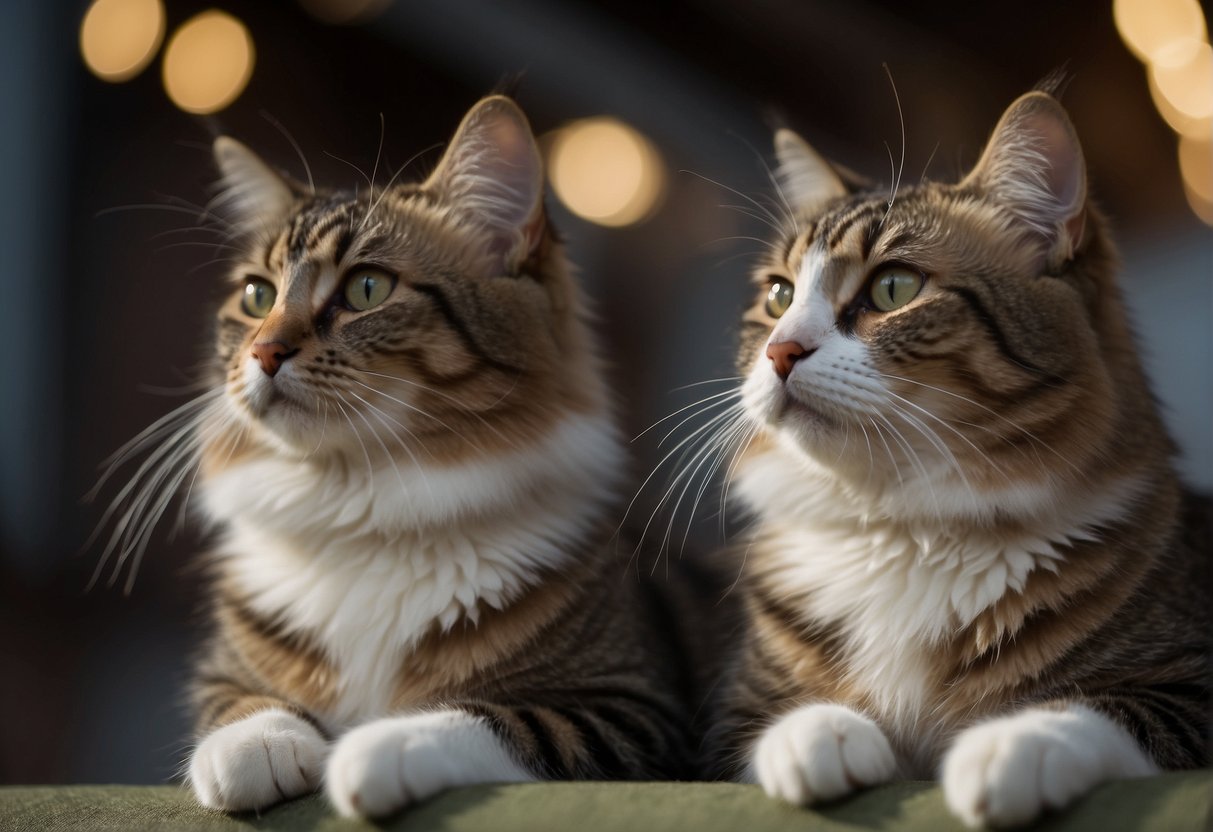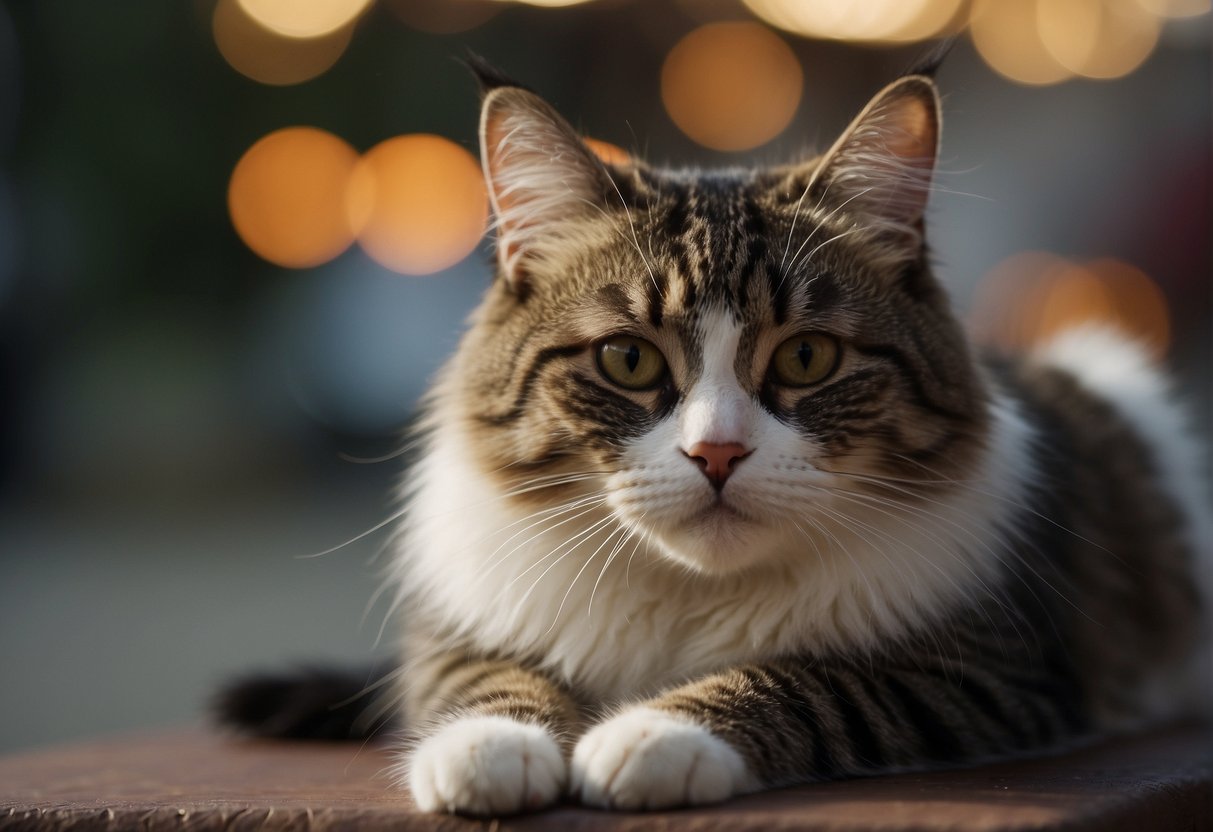Cats have quite an interesting relationship with music, and while they don’t jam to the latest top 40, they definitely show signs of interest in certain types of sound. You might notice your furry companion perk up its ears at the sound of melodies that mimic natural harmonies, like the chirping of birds or gentle purring, which are more aligned with their frequency range.

As a cat owner, you’ve perhaps seen how indifferent your cat can seem towards your favorite tunes, but when the music caters to their auditory preferences, it’s a different story.
Cats typically enjoy ‘species-specific’ music, which is composed with tones and tempos that fall into their natural vocal range and match the beat of their own purring.
Observations show that when exposed to such music, cats often display positive behaviors; they might rub against the speakers or purr contentedly, revealing a side of their personality that is responsive and engaged with their environment.
When introducing music to your cat, consider the volume and style. Just as you might feel overwhelmed by blaring sounds, so might your cat. Gentle, soothing tempos are more likely to be a hit, encouraging relaxation or curious engagement.
Cats and Their Relationship with Music

Your feline friend has a unique relationship with music that is far from what you might expect. Understanding how cats perceive and react to music can be quite fascinating, especially when comparing it to our human experience.
Understanding Cat-Specific Music
Cat-specific music is a fascinating concept that caters to the unique auditory preferences of cats. Researchers like David Teie from the University of Wisconsin have pioneered the creation of music that incorporates frequencies and tempos that align with the communication and environmental sounds that cats typically respond to.
This species-specific music often includes purring sounds and the suckling frequencies to comfort and engage cats.
The Science Behind Felines and Sound
Cats experience the world of sound differently than humans. Their superior hearing allows them to detect a wider frequency range, which is crucial in their natural communication and hunting behaviors.
The collaboration between David Teie and Charles Snowdon at the University of Wisconsin has led to insights into how feline-centric compositions can impact cat behavior. For instance, classical music, with its varied tempos and frequencies, has been shown to be preferred by some cats.
This is indicative of how the intricacies of animal behavior and sound interplay in the realm of a species’ specific music preferences.
The Effects of Different Genres on Cats
Let’s explore how different types of music can impact cat behavior and stress levels.
Classical Music and Cat Behavior
Your cat may display signs of relaxation when listening to classical music. The slower tempos and softer pitches typical of classical pieces are often found to be calming for cats.
For instance, when your cats are exposed to the harmonious melodies of Bach or the soothing rhythms of Debussy, you might observe a decrease in their heart rates and a more tranquil demeanor.
Heavy Metal and Feline Stress Levels
In contrast, genres like heavy metal with its fast tempo and high pitch can lead to heightened stress levels in cats. The intense beats and loud volumes characteristic of heavy metal music might cause your cat to become agitated or display signs of anxiety.
Witnessing a cat’s adverse reaction to a blaring rock song helps illustrate how sensitive felines are to harsh sounds.
The Role of Tempo and Pitch in Music’s Impact
The tempo and pitch of music play crucial roles in how your cat will respond. Softer, slower-tempo music can be soothing, while music with a fast tempo and high pitch may be stressful for some cats. Every cat is unique and their personal preferences can differ—just like ours—so paying attention to their reactions can help you create the best auditory environment for your kitty.
Practical Applications of Music in Cat Care
Music isn’t just a source of entertainment for humans; it can have significant benefits for your furry companions as well. Strategic use of music in both home and veterinary settings can help manage stress and create a calming atmosphere for domestic cats.
Incorporating Music into Veterinary Clinics
At your local veterinary clinic, music can be an effective tool to reduce the anxiety that many pets experience. Veterinarians often play species-specific music that includes cat vocalizations like purring and suckling, which can have a calming effect on your cat during a check-up or procedure.
- Key benefits:
- Reduces Stress: Soothing tunes can lower stress levels, leading to a more relaxed visit.
- Minimizes Distractions: Background music can help mask the intimidating sounds of other animals or medical equipment.
- Type of Music:
- Cat-specific tracks that incorporate familiar and comforting sounds, like purring or gentle chirping.
Music for Cats at Home: When and How
At home, you can use music to help manage your cat’s behavior and emotional state, especially if they experience separation anxiety or general nervousness.
- When to use music:
- When you’re leaving the home to help with separation anxiety.
- During a storm or fireworks to help alleviate fear.
- To create a routine that signals it’s time to relax or sleep.
- How to play music for your cats:
- Play music at a low volume; cats have sensitive hearing.
- Choose gentle, slow-tempo music to avoid overstimulation.
- Experiment with different genres, observing your cat’s response, and stick to what they seem to prefer.

My name is James, and welcome to FAQCats!
Along with our team of cat owners, expert pet enthusiasts, and pet professionals, we aim to write engaging helpful, engaging content about cats. At FAQCats we strive to provide content that’s accurate and fun to read. Our team writes about everything related to cats; even the most complex of topics. Through extensive research and caring for our own fur-pals, we’re able to provide something cat owners worldwide will love. Have a look around, and leave us feedback anytime!

